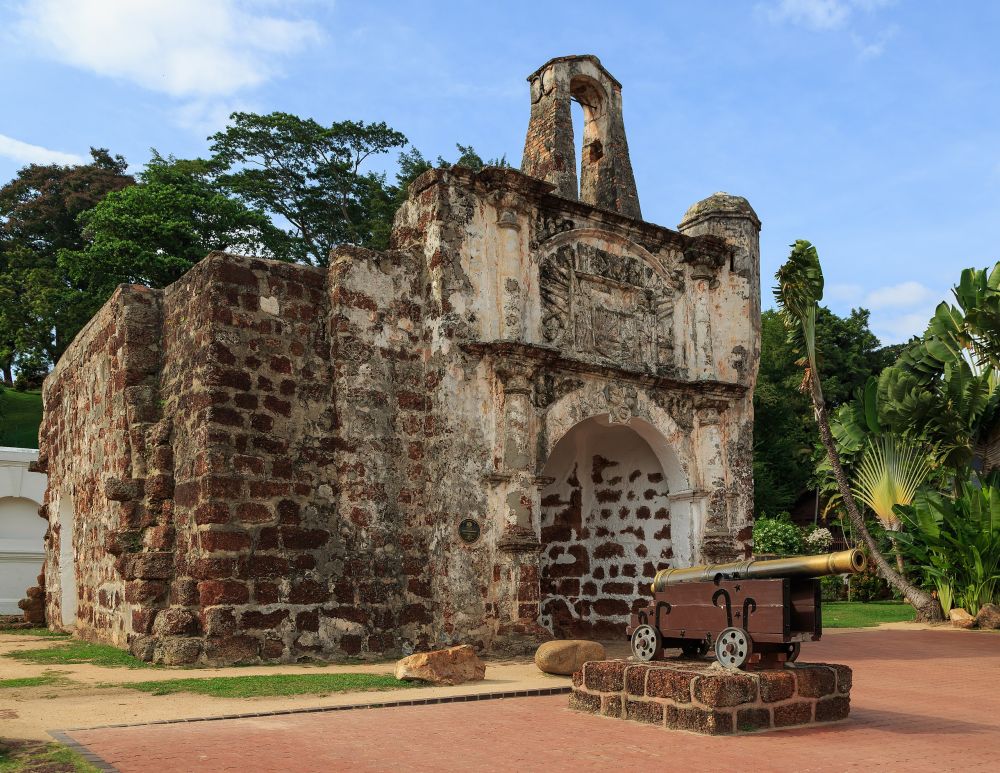

The history of tourism at A Famosa in Malacca, Malaysia, is deeply rooted in the rich tapestry of the city's colonial past. Malacca itself, officially known as Melaka, has been a pivotal port in Southeast Asian trade since its founding in the 14th century by Parameswara. However, the landmark known as A Famosa took its place in history when the Portuguese conquered Malacca in 1511.
They constructed A Famosa or "The Famous" in Portuguese, as a fortress to defend their territory. It was one of the most significant European architectural feats in the East during that era. For centuries, Malacca was a strategic jewel for the colonial powers that controlled it, which included the Dutch after the Portuguese and later the British. With each transition, A Famosa witnessed modifications and reconstructions until the British East India Company ordered its demolition in the early 19th century, leaving only the famous gateway, Porta de Santiago.
The tourism aspect of A Famosa began more earnestly in the 20th century, as Malaysia sought to preserve and promote its multicultural heritage. The site has grown to become one of Malaysia's most visited historical landmarks, attracting those interested in the country's colonial past. Recognizing its historical significance and its potential to draw visitors, the Malaysian government, alongside heritage organizations, has undertaken various preservation and restoration efforts.
As tourism developed, facilities around A Famosa also expanded to accommodate visitors. This includes the establishment of museums, interpretation centers, and guided tour services, which have enriched the visitor's experience. The rise of heritage tourism in Melaka was solidified when UNESCO declared Melaka and Georgetown in Penang as World Heritage Sites in 2008. This accolade increased Malacca's profile on the world stage, further boosting tourism numbers.
Latest Tourism Trends at A Famosa
In recent years, tourism trends at A Famosa have evolved. Due to the global interest in authentic and immersive experiences, there has been an uptick in cultural tourism. Visitors are increasingly seeking to understand the historical context of the sites they visit, leading to a greater appreciation of the tours and interpretive performances that recount the history of A Famosa and Malacca's colonial influences.
Furthermore, the local government has invested in the night-time economy of Malacca, with the introduction of evening markets, cultural shows, and light projection mapping on historical buildings, including A Famosa, which has become a popular night-time attraction itself. There is also a growing focus on sustainable tourism practices to preserve the heritage site for future generations.
Amidst the global pandemic, the tourism industry faced unprecedented challenges. However, Malacca adapted by promoting domestic tourism and implementing stringent health and safety protocols. As travelers gradually return, A Famosa continues to reinvent itself, with digital technologies such as virtual tours and online educational resources, ensuring that it remains a must-visit destination in Malaysia.
In conclusion, the history of tourism at A Famosa is as dynamic as its storied past. Its continuous adaptation to global trends and visitor preferences ensures that A Famosa remains not only a historic site but a vibrant tourist attraction that honors its rich legacy while looking forward to a future of innovative tourism experiences.